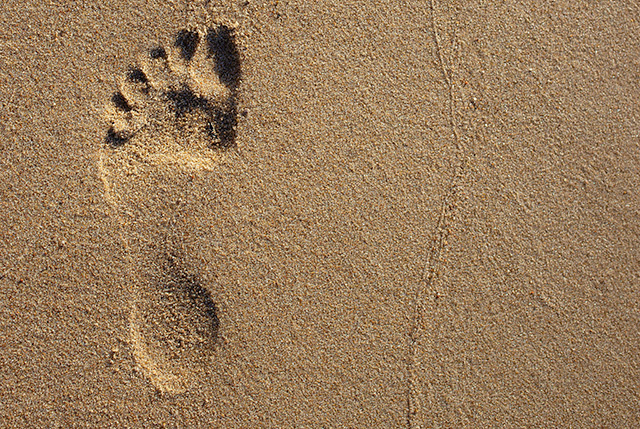Whether you are walking or running, running for fitness or competing at a high level, an extremely important piece of equipment is a good pair of shoes. The definition of a good shoe is one that fits you, not necessarily one that’s expensive. Wearing shoes that don’t fit or don’t properly support your feet can easily result in injury, resulting not only in discomfort and pain, but also discourage you from achieving your goals. You don't have to spend hundreds of dollars on the best brand name shoes - you just need something reliable and shoes that feel comfortable for you.
 what is your foot shape?
what is your foot shape?There are a lot of features that are important in an exercise shoe. The running shoes you choose need to tick all the right boxes, not just fitting correctly, but having the support, stability, and cushioning that are all going to play a role in your comfort and performance.
Get Assessed
It is best to get professional advice. Seek out a running shoe store staffed by professionally trained shoe fitters, and expect to spend 30 minutes or more in your shoe fitting and selection expedition, allowing the fitter to properly assess your stance, foot strike, gait, and wear pattern, and giving you ample time to try on as many pairs as possible.
It is a good idea to take an old pair of sneakers with you, so that the fitter can assess your wear pattern on the sole, giving them an insight into your running style. The fitter should also look at you standing in bare feet to determine whether you have low, medium, or high arches. Finally, the fitter should also watch you walk and run with bare feet. All of these assessments help determine your specific shoe needs.
What's Your Foot Shape?
With every stride, your foot pronates to some degree. This is the natural roll of your foot from heel to toe. A neutral pronation is when you hit the outside of the heel, and move through the ball of your foot so that you push off evenly across the front of your foot. You can have supination (under pronation) or overpronation too, and you get shoes that can help compensate for that.
Those with flat arches (whose shoes show wear on the inner section of the toe box) over-pronate, meaning that their feet roll too much. Such feet require strong, stabilizing shoes that help prevent over-pronation.
Walkers with high arches (whose shoes show wear on the outer section of the heel) supinate; their feet don’t roll enough. Supinators need very flexible shoes, to encourage their feet to pronate further.
Another way to determine if you have high or low arches is with the "wet foot" test. Put a couple of newspaper pages or other paper on the floor. Wet the bottom of your barefoot, and step onto the paper. If the wet area on the paper is just around the outer edge of your foot, you have high arches; your arches never touched the paper. If you get a big, wet blob, you have flat arches.
You can also look at your footprint left after walking in the sand.
More Tips for a Proper Shoe Fit
- Buy shoes in the afternoon: Your feet are the largest later in the day, so make sure you go shopping for new shoes and do your fitting at the end of the day when they are at their largest. Your feet will also swell when running, so you'll get a more accurate fit this way.
- Go for function: Remember that the decision about which shoe to buy is about function, not fashion. Buy the pair of shoes that fits the best, not the one that’s the most trendy.
- Go Long: Expect to wear a shoe that’s at least a full size larger than your street shoes. Look for plenty of room in the toe box area. Your toes should not touch the end of the shoe.
- Same Socks: When shopping for your runners, wear the same type of socks that you’ll wear when you exercise in the shoes.
- Try Many: Try many pairs before making a decision. Ask if you can walk around the block in each pair before making a decision.
- Avoid Peer Pressure: Just because your friend says a particular model is great doesn't mean it will work for you. The same goes for sports celebrities, don't be swayed by flashy ad campaigns, and focus on getting the right fit for you.
- Don't Pinch: When your foot is sitting nice and centered on the sole of the shoe, the upper should wrap around your foot and feel like it’s holding you in place. There should be no pinching anywhere on your foot, nor should you feel like you can move your foot within the shoe.
- Lace Up: Consider using different lacing methods to create the best fit, for example, bunny ears to prevent heel slippage or particular lacing for wide feet.
- Break them in: Don’t expect to go out for a five-mile run in your new shoes. Ease into it, to make sure they fit correctly. Break them in slowly with short runs or wear them around the house for a while.
Related Pages
- Running Shoe Guide — what to look for in running shoes.
- More sports shoes — reviews of different sports and fitness shoes.
- Buy Nike Shoes in our online store.
- Fitness testing shoes
- Running for fitness
- About Sports Shoes
- Most Common Exercise Injuries to Your Feet and How to Prevent Them
- Benefits of Barefoot Running


 Upcoming Events
Upcoming Events